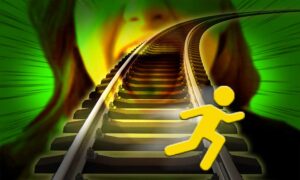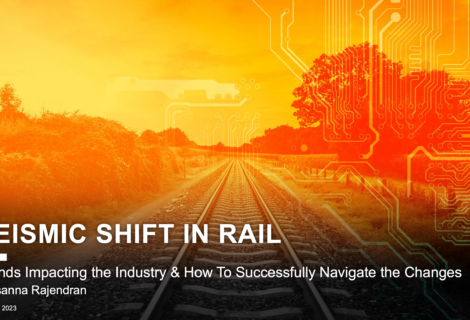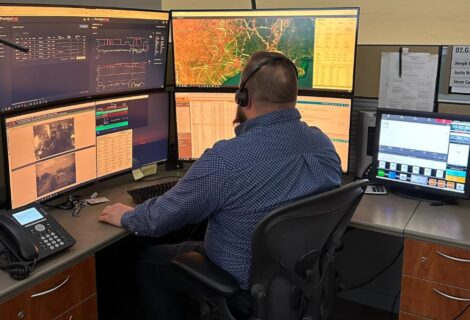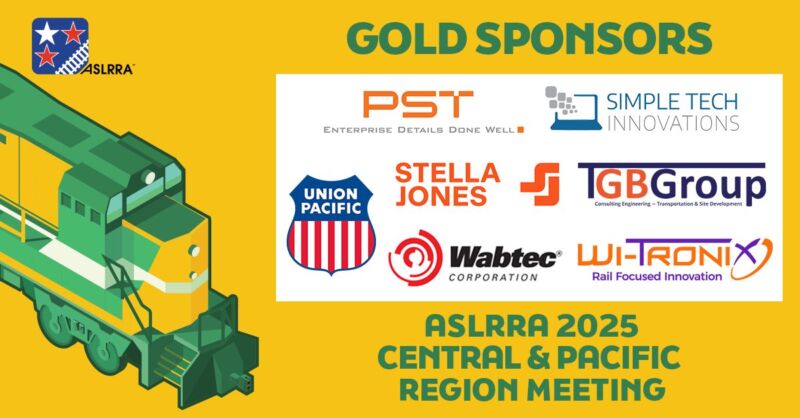“I didn’t sign up for this…”

The teen girls instantly levitated above the train tracks they were sitting on when the classic train whistle screamed at them to move. Then they ran as fast as any Olympic track star out of the blocks would have run.
A massive, gently chuffing steam locomotive was on display and getting ready to haul a trainload of steam enthusiasts up to Cheyenne Frontier Days from Denver, Colorado. The girls had been sitting in front of the locomotive, staying just far enough away from their parents to avoid being bothered by them.
An engineer was doing a locomotive walk-around prior to departing, saw them, and walked up suggesting, “It’s a good idea to move off of the tracks now.” The piercing train whistle was the last call to board ahead of the eventual departure.
I watched the three girls for a couple of minutes afterward. It was obvious the adrenaline was going to be doing its thing for a while.
They’ll Turn You Blue
Locomotive whistles and horns have been designed exclusively to get your attention. One engineer described them to me as “Loud enough to turn you blue.” It is the go-to warning method for anyone or anything in a locomotive’s path. But once the train is moving, the train horn becomes more of a defensive warning than an offensive one, especially as locomotives journey through “quiet zones” where sounding the horn is forbidden except as a last resort in dangerous circumstances.
Railroad crossing safety improvement has its challenges. Train horns and mechanical guards may not be the answer.
I Couldn’t Look Away
I sat behind someone who couldn’t pay attention to the speaker’s presentation at a rail conference a couple of years ago, – and I couldn’t pay attention either. This man had a job to do; a review was in progress. Instead of listening to the event speaker, he was playing and replaying fresh cab footage of an accident on his laptop, trying to see what could have been done differently.
An automobile had stalled on an unguarded crossing and the car owner was simply standing next to his car, expecting the train to stop. Physics doesn’t work that way. By the time the engineer identified the threat and had obviously applied full brakes, the driver and his car were, thankfully, out of the camera frame. The train had been traveling fast enough that it continued beyond the intersection for another 10 or 15 seconds even with full brakes applied.
There were two railroad crossing victims that day: the driver of the automobile, and the engineer who continues to live on. As an industry, we need to reduce both sets of victims.
The General Public is Ahead of Us
In a fantastic partnership, Google’s driver alert application called Waze is now connected to national FRA databases. Amongst other alerts, the Waze app now alerts drivers of rail intersections so they can be extra vigilant when approaching them. This is especially important for unguarded crossings where trains can be moving extremely fast. Crossing accidents continue to be a major proportion of accidents railroads experience despite training and qualification for specific train routes.
But there is not currently anything like Waze to alert engineers of fouled crossings. A few crossings, perhaps, but not the majority though.
The Next Community Railroad Thing?
Technology and communications are finally at a point where fouled crossings are something that might warrant a new look. Money is always “a” factor, but it is probably no longer “the” factor for these scenarios anymore. Railroads have come together before with great results. AAR and TTCI are shining examples of improving railroad safety. Individually as a specific railroad, a crossing solution is probably not going to happen. But, who knows. The cost of quality tech keeps falling.
 He Quit
He Quit
You have to think about what this must feel like. I came across an interview with an engineer who had been involved in 3 crossing fatalities in as many years. He was experienced, safe, and qualified. But the third accident was the last straw and he wanted to get as far away from the rail industry as he could.
This engineer had a front-row seat to end-of-life events over and over. He couldn’t do anything more than he already had done to prevent them either. He was quoted as saying, “I quit. I have a family. I didn’t sign up for this…”
These women and men, we need to protect our own. The answer to improved railroad crossing safety may be closer than we think.

 He Quit
He Quit




